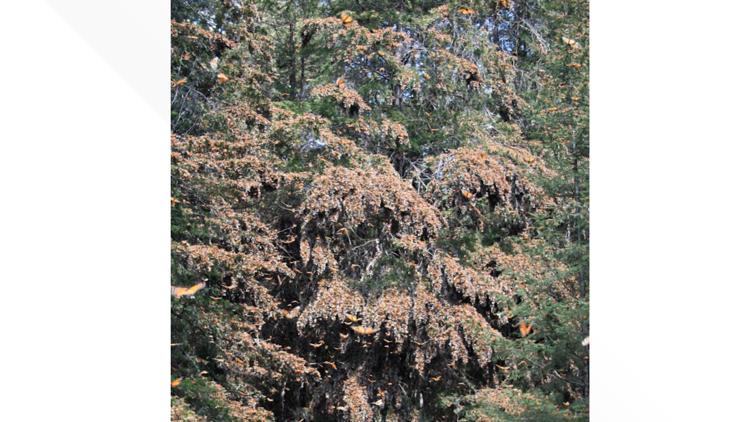ATLANTA — The monarch butterfly could soon receive federal protection, which would be a significant step toward protecting one of North America's most beloved species.
The U.S. Fish and Wildlife Service (FWS) has proposed listing the monarch butterfly as a threatened species under the Endangered Species Act. The proposal seeks to safeguard the monarch's dwindling populations while encouraging public involvement in conservation efforts.
The monarch butterfly, known for its vibrant orange and black wings and epic migrations, has seen dramatic population declines over recent years due to habitat loss, pesticide use and climate change.
Slide the line in the interactive graphic below to watch a butterfly's growth.
Monarch migration pattern and decline
11Alive has previously reported on the monarch butterfly's migration patterns and decline.
In the 1990s, nearly 700 million monarchs migrated from the United States and Canada to Mexico, and more than one million butterflies overwintered in Mexico City, according to the nonprofit Xerces Society.
Now, researchers and scientists estimate only a part of the monarch butterfly population remains. Since the 1980s, the western monarch butterfly population has declined by more than 90%, and the eastern monarch population has declined by 80%, according to the nonprofit Environment America.
"I have to have hope, and I believe that these are resilient little animals, and they can bounce back if we give them a chance. We can figure this out and we can fix this," University of Georgia Ecology Professor Sonia Altizer previously said. "What we do here in Georgia will be so important to protect monarchs all over."
Photos | Monarch butterflies in Mexico
RELATED: Sharp decline in monarch butterfly population alarms scientists and advocates | How to help
How to help monarch conservation efforts
“This proposed listing invites unprecedented public participation in shaping monarch conservation efforts,” FWS Director Martha Williams said in a release.
Williams emphasized that even small actions—such as planting milkweed and nectar plants—could significantly aid the species' recovery.
However, researchers say you can't just plant any type of milkweed - it must be native to the area. To learn more about which type of milkweed to plant, click here.
Once the caterpillar is fully grown into a butterfly, scientists say to be sure to plant an assortment of flowers that will bloom and provide nectar for them. See the guide below for which nectar plants are best in the southeast:
Public comments on the proposal will also be accepted until March 12, 2025, through regulations.gov (docket number FWS-R3-ES-2024-0137). Two virtual public information meetings and hearings are planned to gather feedback and educate participants on how they can help save the monarch butterfly.
Additionally, volunteers can help restore habitats across the Peach State by partnering with organizations such as Monarch Across Georgia.
“Working together, we can help make this extraordinary species a legacy for our children and generations to come,” Williams added.
For more information on how to support monarch conservation and details about the listing proposal, click here. You can also learn more about how to volunteer online here.



























